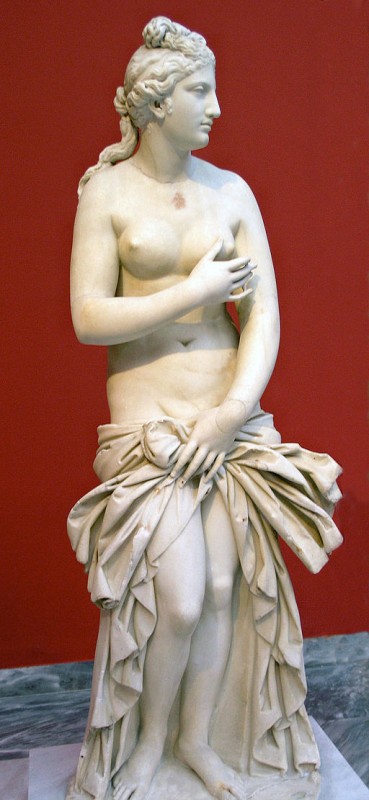“You look fatter, Ripa,” my Ayurveda teacher said to me recently.
I smiled and replied “I never thought I’d take that as a compliment as much as I do now.”
Having once struggled with anorexia nervosa, starving myself for long periods of time to achieve a feeling of “skinny,” I have now come 360 degrees on my journey. I have not only been able to gain much-needed weight, but have experienced a transformation in my whole attitude towards my body. Ayurveda, the ancient art and science of life from India, has inspired me to now love every ounce of fat in my body.
Here’s why:
Ayurveda is the sister science of Yoga, which heals patients by putting us back in touch with nature’s eternal rhythms. Ayurveda explains the macrocosm (the universe surrounding us) and the microcosm (the universe within: our individual mind and body containers) in terms of the five great elements.
These elements include ether, air, fire, water, and earth.
The five great elements combine to form three bio-psychic forces called doshas in the body and mind. These doshas, called Vata, Pitta, and Kapha, are explained by Ayurveda as being the building blocks of the entire universe.
The ether and air elements combine to form what is called Vata dosha, which is responsible for all movement. Fire and water merge to create Pitta dosha, which governs the principle of transformation. Earth and water coalesce to comprise Kapha dosha, which maintains stability.
Those with more Vata dosha are often very thin, are either very tall or very short, with long, narrow faces. They tend to have dry skin and hair. Vata dominant individuals usually love to be on the go, have many ideas, get easily excited, and can be easily prone to constant mental activity. Their moods, digestion, daily routine, likes, and dislikes are all subject to frequent change. All of this very aptly describes my life in New York City, where everything in my life, along with myself, were constantly in a realm of flux.
When Vata dosha goes into a state of imbalance, as it does in the case of anorexia nervosa, it can manifest in many different ways.
For me, this imbalance showed up in the form of deep-seated fear and anxiety, cracking joints, frequent headaches, insomnia, nightmares, and a feeling of lightheadedness. I also experienced excruciating menstrual pain, which I could feel deep in my bones. My hair started to fall out of my head in copious amounts.
This was all in addition to my inability to maintain a healthy weight.
I am no longer super-thin, yet I continue to marvel at the wonders of what is called Kapha Dosha in Ayurveda: a bio-force that creates fat and other essential tissues in the body. You see, for me, anorexia was not actually about being thin as much as it was about wanting to be free.
Anorexia was a physical manifestation of a deep internal battle regarding personal control for me. As a young girl, I felt like everything in my life was so completely out of control that anorexia was a way to restore internal order amidst external chaos.
And while there was a sort of euphoria connected with not eating for extended time periods, I realized I was actually wasting away, one (skipped) meal at a time.
The way Ayurveda explains anorexia is that, in suppressing the natural urge for hunger, Vata dosha becomes vitiated.
The more we suppress our physiological urges, the more potential we actually invite for disease.
And while Pitta and Kapha doshas are responsible for 40 and 20 respective diseases, Vata dosha is the driving force behind a whopping 80 different diseases.
In recent decades, as the prevailing western culture has quickly started taking over the modern world via globalization, we have been collectively conditioned to view “thin” as being “in.” These days, no one wants to be considered “fat.” Runway models, who personify the modern beauty ideal, are often portrayed to look more similar to adolescent boys, with narrow hips, flat chests, and ultra-thin limbs than to adult women, with fuller-looking bodies.
Though my experience with anorexia was actually more about finding ways to make myself less physically attractive to detract unwanted attention at a young age, I can’t help but feel sorry when I see how models portray the modern-day beauty ideal. Thin may be in, but at what cost to those who strive so hard to be skinny? The skinnier the woman, the more compassion I feel for her, as I know from hard-earned experience how much emotional emptiness exists in the attainment of being ultra-thin.
I’m not trying to say that fat is good and skinny is bad.
Ayurveda is, rather, all about balance, and cultivating the right amount of the elements we may lack in our minds and bodies. Because I have always been on the skinnier side of the equation and have had to work hard to gain weight, and because fat is given such a bad rap these days, I truly appreciate the value of the earth and water elements, which are responsible for body mass.
When the earth and water elements coalesce, they create Kapha dosha, which is responsible for stability. The earth aspect of Kapha dosha makes those who embody it enduring, like a rock or tree. Having enough healthy Kapha dosha is the key not only to stability, but strength, stamina, lubrication, patience, fertility, calmness, and contentment.
Kapha dominant individuals are those we can rely on to be there, no matter what. They have a grounded presence that makes them great parents, teachers, and other roles requiring consistency and compassion. Having healthy Kapha dosha provides one with an amazing capacity for incredibly hard work, both of the physical and mental variety. I have been amazed at how much more grounded and committed I have been able to be, not only towards work-related responsibilities, but to keeping my promises to myself across many spectrums of my life.
I now know that I can count on me.
The water aspect of Kapha dosha manifests as softness, beauty, and a naturally nurturing disposition, which easily and deeply cares for others. One of the qualities of Kapha dosha is called Sneha, which means oiliness. Another meaning of Sneha is “to love.”
I don’t know about you, but for me, there is nothing quite like a warm maternal hug from someone a little on the larger side.
Learning how to love myself, however, has been the key to the inner freedom I sought through anorexia.
Ayurveda is a truly amazing science in how it addresses body, mind, and spirit—and all three of these are, indeed, required for full healing to take place.
It is amazing that, unlike our modern society, the ancient Greek, Roman, Indian, and other civilizations equated the curves on a woman’s body with beauty, femininity, and fertility. This beauty standard is still upheld in many parts of India, as prospective in-laws prefer larger-bodied women for their sons as a means to ensure better progeny in the arranged marriage culture. So many of our Bollywood (Indian film) stars, especially those from the early days of Bollywood cinema, are full-figured women.
Too much fat tissue can be as problematic as too little of it. Yet on the whole, it makes a lot of sense why more weighty women are needed to ensure the continuation of the human race.
The ancient Ayurvedic texts extol the virtues of Kapha dosha. One of these texts, called Charaka Samhita, praises healthy Kapha dosha in the following ways: it gives an “excellent, compact, stable body, well-developed and perfect organs, strong ligaments, clear eyes, face, and complexion, a sweet, clear voice. Because of the presence of these qualities, Kapha dominant people are strong, wealthy, learned, brave, calm, and long-lived.”
Gaining weight by cultivating healthy Kapha has given me not only the ability to love myself and others more, but also provides me with stability, strength, and satisfaction that comes from deep within my own self. It has taught me how to give not from a place of lack, but rather from a space of fullness inside, which has been incredibly liberating.
My knowledge of Ayurveda has completely destroyed the possibility of my ever becoming anorexic again. It has made me quite counter-cultural in my newfound quest to gain weight, so I can have more of the wonderful qualities of Kapha dosha.
And it has inspired me to love every ounce of fat in my body.
Love elephant and want to go steady?
Sign up for our (curated) daily and weekly newsletters!
Editor: Renée Picard
Photo: Wiki Commons












Read 2 comments and reply